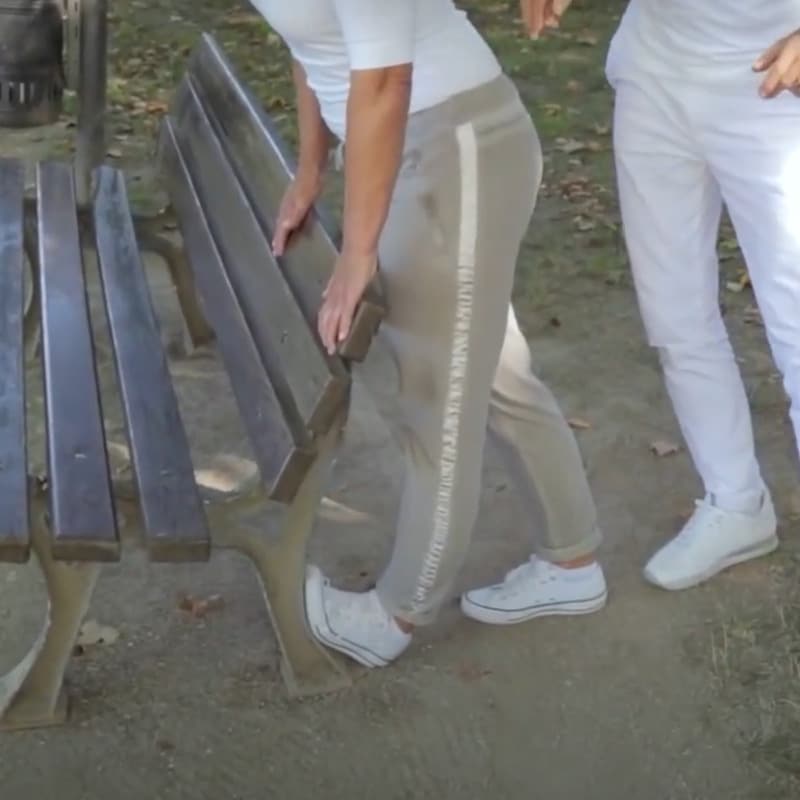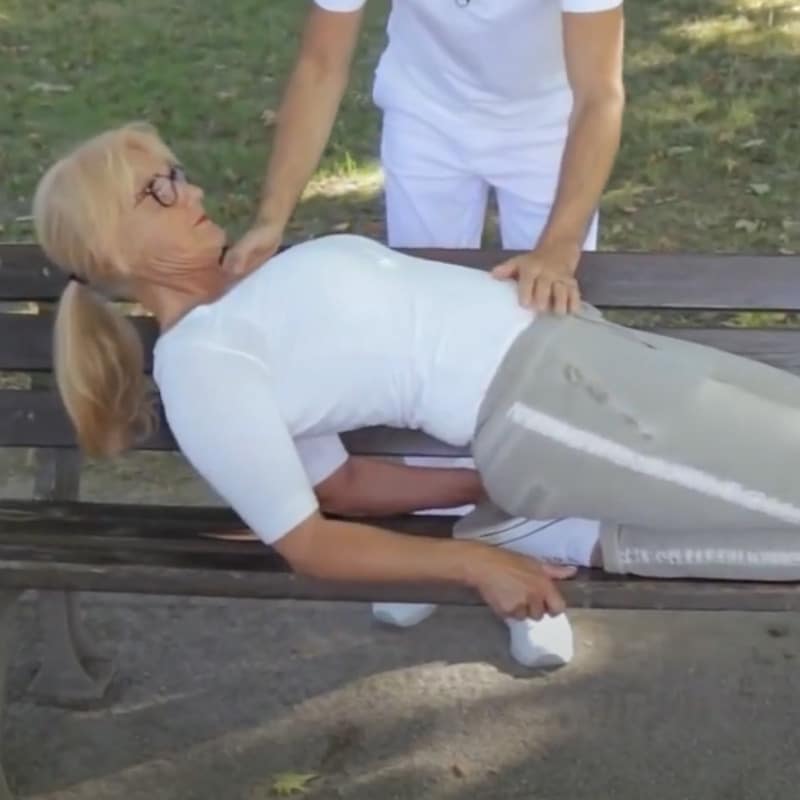Runner’s Knee stretches
Body Part:
Foot & Leg
Equipment:
None
Level:
Beginner
Body Part:
Foot & Leg
Equipment:
None
Level:
Beginner
Is runner’s knee keeping you from your favourite exercise or sport or causing pain when you walk? Our 5-minute stretches can help prevent runner’s knee pain, restore your range of motion, and get you back out on the track or field or simply take the “ouch” out of walking. Before we get into our stretching routine, let’s take a closer look at what runner’s knee is, the causes and the most common symptoms of runner’s knee.
Runner’s knee is an injury that is caused by the overuse of the leg. It’s also known as Patellofemoral Pain Syndrome and Iliotibial Band Syndrome. Research shows that ITBS is the most common injury to occur along the outside of the knee in runners.1) Although it’s called “runners knee,” the condition is not specific to runners; athletes, as well as anyone who regularly plays high-impact sports, may experience patellofemoral pain syndrome.
Along the side of your thighs is soft tissue called the iliotibial band. It runs from your pelvis to your knees, attaching your tensor fascia latae (a muscle in your thigh) to your glute muscles. The iliotibial band becomes thicker as it crosses your thigh bone. Repeatedly bending and straightening your knee causes friction between your iliotibial band and the bones and muscles underneath. This results in irritation and inflammation, which brings about pain around or behind your knee.
Any activity, especially high-impact sports like running, cycling, skiing and squatting, that overworks your knee can cause runner’s knee. It can also develop from remaining in one position for a long period of time (like sitting with your knees bent or standing at work.)
If you begin an intense or new exercise routine after a long break and do not warm up correctly or thoroughly enough, runner’s knee may strike. It can also develop if your kneecaps are improperly aligned, your thigh muscles are weak or tight, you have flat feet, or if you’ve had an injury to the kneecap.
The most common symptom of runner’s knee is pain around or behind the knee after running, walking, taking the stairs, or going from a position of sitting to standing.
Additional symptoms of runner’s knee are that:
You may also notice pain or a tight feeling at your hips.
Regularly stretching can decrease knee pain. Our video will show you two stretches that target the hips and knees to relieve pain and swelling. The entire runner’s knee pain routine only takes six minutes, and it’s been developed so that you can do it on a park bench or with a chair

Make sure that you don’t stick your buttocks out.

Our 15-minute full-body stretch helps increase flexibility, reduces the risk of injury to your muscles and joints, and can increase your athletic performance.
Try Our Full Body Warm Up
A baker’s cyst (also known as popliteal cyst) is a swelling at the back of the knee which is filled with fluids. Its occurrence is often linked to knee joint issues and wear and tear like arthritis.
Quiet Cracking KneesKnee bursitis develops when one of the bursae surrounding the knee becomes inflamed. Our stretching routine can help alleviate your pain and reduce the swelling.
Try Now